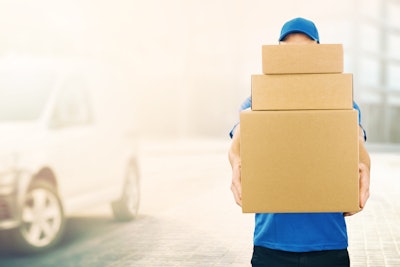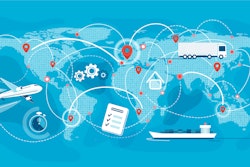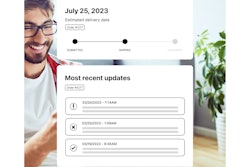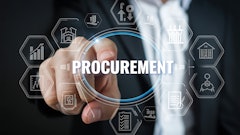
Over the last decade, free shipping has become near-ubiquitous in the world of e-commerce and a default expectation among online consumers. But the reality of “free” shipping has finally caught up with merchants. As retailers have long understood and Reuters has recently reported, no matter what the checkout page says, shipping costs don’t actually disappear. They are simply re-labeled and redistributed.
Amazon Prime members, for example, believe they are enjoying “free” same-day shipping (or two-day shipping for those outside a major metropolitan area), but the reality is that those costs show up elsewhere: in the minimum purchase price of $25, and the $139 per year they pay for membership. Add to that the fact that Amazon Prime memberships increased in cost by almost 16% in February of 2022, much to many customers’ frustration, and it becomes clear that the “free shipping” model is becoming increasingly unsustainable.
The problem with “free” shipping
At first glance, the difference between genuinely free shipping and a re-distributed cost may seem arbitrary. It doesn’t matter if shoppers don’t understand what they’re paying for, especially when three out of four customers consider free shipping influential when deciding whether or not to make a purchase. When the economy is relatively stable, and supply chains are predictable, this model works fine. But under the current system, the cost of shipping hasn’t been eliminated, just put in a different “bucket”—and as is the case with Amazon, it has steadily become more expensive for consumers and retailers alike.
The supply chain chaos created by the pandemic has made free delivery a major money-loser for retailers, with many major retailers setting shipping cost reduction goals. And while the supply chain is finally less volatile, vulnerabilities remain. Retailers cannot continue to fold the cost of shipping into “service” and “subscription” fees, especially as consumers become increasingly frustrated with what are often perceived as “hidden costs.” Instead, retailers must double down on new strategies for delivering a great customer experience.
Making costs transparent
Consumer research demonstrates that today’s customers overwhelmingly prioritize free shipping (75%) over fast shipping (25%). While these numbers may make it seem daunting to imagine trying to shift perspectives, the reality is that they are based on customers’ false perception that “free shipping” means money saved. Now, retailers that offer other compelling shipping perks, and perhaps even take the time to educate their customers about what they’ve been paying for all along, can preserve or increase loyalty.
According to a Forrester report, consumers are increasingly invested in shopping experiences that make them feel empowered. Despite the fact that “free” shipping has become an expectation, consumers also value speed, and retailers can work to meet that need instead (some already are). Without the mandate to tuck shipping costs inside merchandise prices and other fees, retailers may be able to entice consumers with revamped deals on their products and win points with other shipping benefits.
According to a PwC survey, 96% of customers are adopting cost-saving behaviors. It follows that those who were previously willing to spend big for free shipping have watched the associated costs balloon with dismay. They are hitting their limits. There may be no better time to break from tradition by replacing nominally “free” deliveries with a transparent breakdown of shipping costs that allows consumers to make the choice that feels right for them. Customers expect free shipping because they’re used to it—but that doesn’t mean they don’t appreciate other, more sustainable shipping benefits, such as speedy, transparent shipping and deliveries that are handled with care.
Speed, visibility and quality are the way of the future
Retailers can invest in partnerships with shipping and logistics providers that take measures to streamline delivery operations, particularly in the final mile phase, with technology that enables them to deliver on promises of speed, visibility and quality. This includes the use of tech that helps reduce damage rates to almost zero, increasing customer satisfaction. White-glove delivery is another benefit retailers can offer and enhance. Merchants can offer superior packaging and handling to protect complicated, bulky items like furniture and appliances, and professional delivery, assembly, and installation.
Total visibility is a growing consumer priority, from the moment they click “purchase” to when their item arrives on their doorstep. Offering granular, up-to-date information has historically proven challenging for retailers, in particular during the final mile phase of delivery. By selecting carriers dedicated to using modern technology, rather than the antiquated order management and tracking systems that are still too prevalent throughout the logistics sector, retailers can deliver on this expectation for their customers.
Of course, the concept of free shipping is not going to disappear entirely. There will always be consumers who prioritize getting something for “free”—or at least, the illusion of savings—over a transparent shipping arrangement. But emphasizing the often-overlooked factors involved in delivery, especially of big and bulky goods like furniture and appliances, can help consumers adjust their perspective as retailers adjust their approach. Ultimately, the question merchants and carriers should pose to consumers is simple: what’s more important, getting your purchase for free or getting your purchase for sure?



![Pros To Know 2026 [color]](https://img.sdcexec.com/mindful/acbm/workspaces/default/uploads/2025/08/prostoknow-2026-color.mduFvhpgMk.png?auto=format%2Ccompress&bg=fff&fill-color=fff&fit=fill&h=100&q=70&w=100)







![Pros To Know 2026 [color]](https://img.sdcexec.com/mindful/acbm/workspaces/default/uploads/2025/08/prostoknow-2026-color.mduFvhpgMk.png?ar=16%3A9&auto=format%2Ccompress&bg=fff&fill-color=fff&fit=fill&h=135&q=70&w=240)







